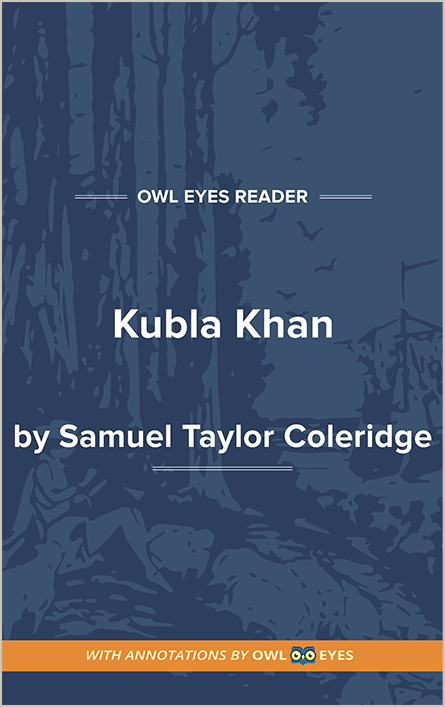Analysis Pages
Metaphor in Kubla Khan
Metaphor Examples in Kubla Khan:
Kubla Khan
🔒"chaffy grain beneath the thresher's flail:..." See in text (Kubla Khan)
"woman wailing for her demon-lover!..." See in text (Kubla Khan)
"deep romantic chasm..." See in text (Kubla Khan)
"five miles of fertile ground..." See in text (Kubla Khan)
"a sunless sea..." See in text (Kubla Khan)
"caverns measureless to man..." See in text (Kubla Khan)
"woman wailing..." See in text (Kubla Khan)

